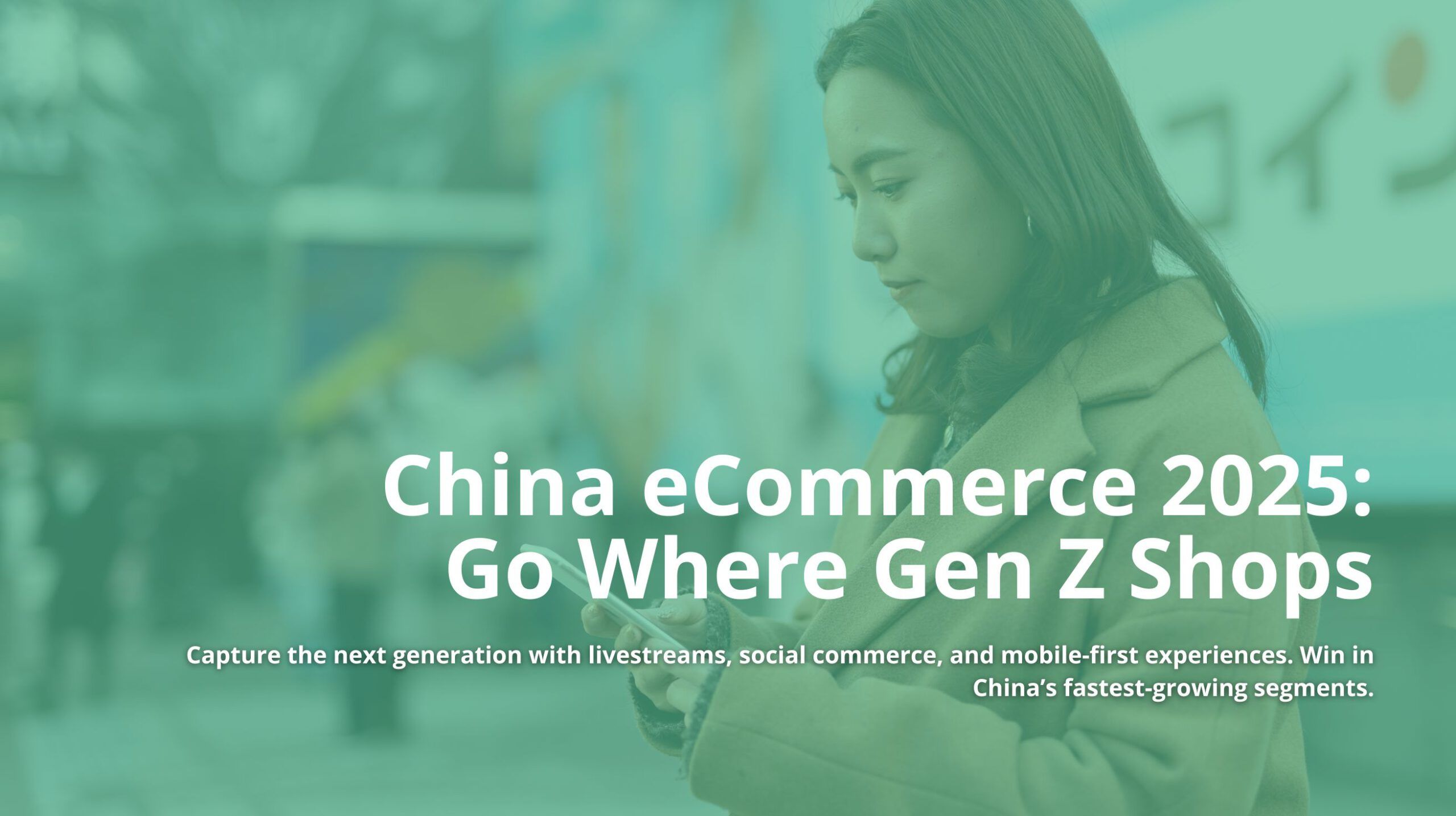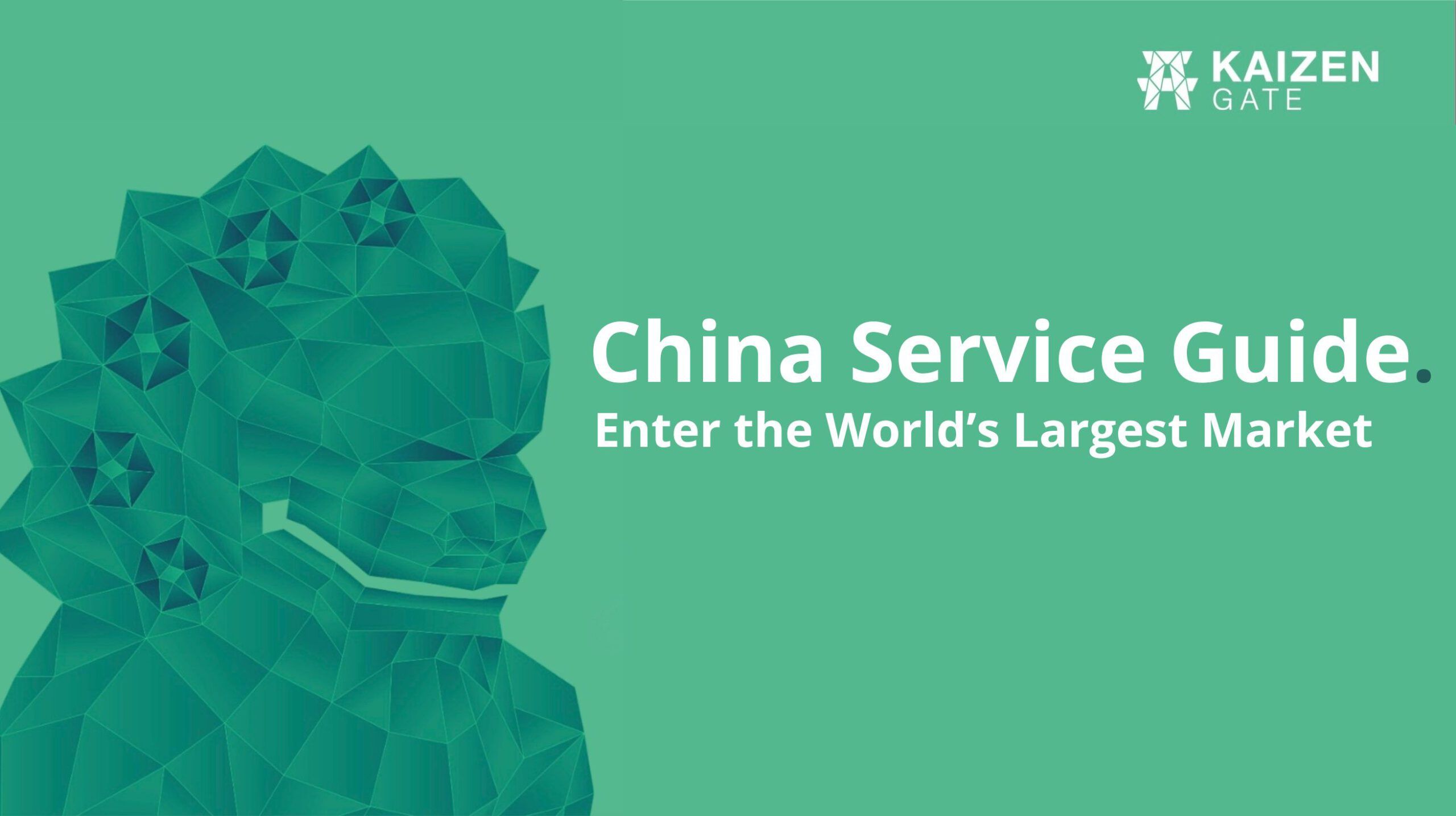China’s online market is the world’s largest and most dynamic, with roughly 915 million digital buyers (about 83% of all internet users) shopping online as of 2023. That makes China an irresistible target for foreign brands, but also a complex one. Today’s Chinese consumers – especially Millennials and Gen Z – expect seamless mobile experiences, social engagement, and constant innovation.
To succeed in 2025, international companies must understand the leading platforms, emerging eCommerce market trends, and the regulatory and cultural challenges unique to China. This strategic guide breaks down how to sell in China online, including the best platforms (Tmall, JD.com, Douyin, Xiaohongshu, etc.), consumer behavior shifts (Gen Z preferences, social commerce, livestreaming), common pitfalls, and winning practices.
China’s E‑Commerce Market in 2025: Size and Players
China’s e-commerce market dwarfs all others. As of 2020–2021 it generated over $2.3 trillion in sales and was expected to reach $3.5+ trillion by 2024. In practical terms, nearly one billion Chinese shops online – around 915 million in 2023 – up from 710 million in 2020. Reflecting this scale, Chinese shoppers account for over half of global online retail sales. The market is dominated by a few major platforms: Alibaba’s Taobao and Tmall ecosystem accounts for roughly 50–55% of China’s online retail (by GMV), followed by JD.com at ~15–18%. (Newer players like Pinduoduo claim another ~13% share, and social platforms are growing quickly.) For example, during Singles’ Day (11.11) 2023, Alibaba/Tmall captured about 62% of all sales (JD ~26%). On that day alone, over 532 million Chinese shopped on Taobao/Tmall, and 402 brands exceeded $13.7 million in sales – including many foreign names like L’Oréal, Nike, and Guerlain. These figures show that even “small” brand stores can reap huge rewards in China’s major shopping festivals.
Key facts (2025): China’s e-commerce penetration is roughly 44–50% of retail sales nationally. Over nine-in-ten internet users have made an online purchase. Cross-border e-commerce (CBEC) is also booming: in 2023 China’s total CBEC import‑export volume hit RMB 2.38 trillion ($331B), with imports (foreign goods into China) worth RMB 548 billion ($76B). About 163 million Chinese now buy from overseas via bonded zones and CBEC platforms, up sharply from prior years. All this means foreign products have deep demand (luxury goods, health supplements, baby formula, etc.), but also a highly competitive, tightly regulated market.

Best Platforms to Sell Online in China
No single platform rules all of China. International brands typically target several channels, depending on product category, strategy (cross‑border vs. local), and audience. The top platforms include:
- Alibaba/Tmall (淘宝/天猫) – China’s biggest marketplace. Tmall Global (天猫国际) is Alibaba’s solution for foreign sellers. With ~50% market share, it offers unparalleled reach. Sellers can tap Alibaba’s sophisticated ecosystem (Taobao Live, AI recommendations, payment services, etc.) and massive traffic. Foreign brands from luxury to FMCG often set up official Flagship Stores here. Tmall’s requirements are strict (brand verification, deposit, China entity or local agent), but its logistical backbone (Cainiao logistics) and integrated marketing tools justify it as a cornerstone of any “how to sell in China online” plan.
- JD.com (京东) – China’s #2 general e-commerce site (~16% market share ) renowned for electronics, appliances, and premium goods. JD offers both direct (1P) retail and a marketplace (JD Worldwide) for overseas brands, plus its own bonded import warehouses. JD’s strengths include its own nationwide delivery network and trust in authenticity. For example, JD can deliver 90% of orders within 24 hours in China, thanks to its self-operated logistics. Major sales events like JD’s 6.18 festival show JD remains a top channel for foreign brands.
- Douyin (抖音) – China’s TikTok is now a social commerce powerhouse. By late 2024 Douyin had about 766 million monthly users, and it reported an astounding GMV of roughly 3.5 trillion yuan ($490B) in 2024 (via livestreams, short videos, and in-app shops). Douyin eclipsed traditional sites in live-stream commerce: as of 2022 it accounted for ~47% of all live-shopping GMV, surpassing Taobao Live. (Kuaishou was next at ~27%.) For brands, Douyin offers influencer marketing (KOL/KOC livestreams), and a younger Gen Z audience. Products from beauty to snacks sell via Douyin by the ton – e.g. limited “drop” livestreams can sell out in seconds. Sellers must adapt to Douyin’s fast-paced style (e.g. short video ads, interactive livestream events, catchy challenges).
- Xiaohongshu (Little Red Book/RED) – A hybrid social network + commerce app favored by urban, mobile-first shoppers (especially women). By late 2024 Xiaohongshu had 225 million monthly active users (ranking it the 7th largest Chinese social platform). It started as a “shopper’s diary” for Chinese travelers to share product reviews and has since grown into a major lifestyle platform. Overseas and domestic brands use Xiaohongshu to build awareness via user-generated posts, KOL reviews, and shoppable mini-stores. Its demographics (younger, affluent, interest in premium and niche products) make it ideal for cosmetics, fashion, and trendy goods.
Besides these, WeChat mini-programs, Taobao (C2C), Pinduoduo (social bargains), and Kuaishou (short video/live sales) are important niche channels. But Tmall, JD, Douyin, and Xiaohongshu remain the best platforms to sell online in China for most foreign brands, given their size and alignment with brand audiences. A typical strategy is a flagship Tmall store, parallel JD presence, plus active Douyin/Xiaohongshu marketing campaigns.
Key Trends in Chinese Consumer Behavior (2025)
- Gen Z Dominance: Chinese Gen Z (born mid-1990s to early 2010s) now influences trends across China. They represent roughly 15–20% of the population and are extremely digitally native. They shop online almost by default: over a third (34%) of Gen Z in China engage in live-stream shopping, compared to only 19% in older demographics.
- Social Commerce and Livestreaming: Douyin and Taobao Live lead, followed by Kuaishou. Platforms are embedding “shop now” links into every video and stream. For example, Alibaba’s Singles Day stats show 60+ million hours of live video watched across its ecosystem. A brand’s livestream (with popular hosts) can generate tens of millions in minutes. Beyond livestreaming, social commerce features – like group-buy deals (Pinduoduo), and social shopping via WeChat groups – are enmeshed in how Chinese buy online.
- Cross-Border Shopping: Chinese consumers love foreign products (food, cosmetics, fashion). CBEC sales grew ~15.6% in 2023 to RMB2.38T total, driven especially by exports. On the import side, sales were RMB548B (up 3.9%), with 163 million buyers. Many Chinese now shop on international sites (Tmall Global, JD Worldwide) for quality assurances or price. Regulatory support (special customs, pilot zones) has made it easier. Foreign brands should consider leveraging cross-border channels for easier initial entry (no local company needed) to test demand.
- Omnichannel and O2O: Mobile is king. Most Chinese transact on apps (WeChat, Taobao app, Douyin, etc.) rather than websites. Even traditional retail is blended with online. Many top brands run WeChat mini-program stores, use Baidu search ads, or sell in connected O2O venues (e.g. an unmanned JD Fresh supermarket). Speedy logistics/fulfillment are expected: next-day or same-day delivery is normal in major cities (thanks to JD and Alibaba networks). Innovation like live “gameified” shopping events, AR/VR try-ons (Dior on WeChat, for example), and social gifting are notable.

Challenges for Foreign Brands
Regulatory and Compliance: China has strict rules for selling online. Foreign sellers must register products (medical devices, cosmetics, food all need NMPA/FDA certification) and often pay import duties or register on CBEC platforms. The E-Commerce Law of 2019 places liability on platforms and sellers to police counterfeit goods, so IP protection is critical. In practice, brands should register trademarks in China and be ready to enforce them. They must also comply with consumer protection and data privacy laws (e.g. the Personal Information Protection Law, PIPL), in fact, consumer trust hinges on data compliance. Selling cross-border can simplify some rules (no need for a Chinese entity for Tmall Global or JD Worldwide) but still requires tax and customs filings through approved channels. Staying on top of evolving rules (e.g. labeling, new consumer protection directives) is essential.
Logistics: China has world-class delivery, but foreign sellers face hurdles. Cross-border shipping can take weeks unless you use local bonded warehouses. Even domestically, expect customers to demand fast, free shipping and easy returns. Working with local 3PLs or e-commerce service providers is almost mandatory. Domestic logistics are a strength for JD or Alibaba (same-day delivery is common for many ZIP codes), but if you ship from overseas, you must use bonded import models or hire a customs broker
Payment: Alipay and WeChat Pay dominate China. Foreign credit cards and PayPal have little traction. Foreign brands must integrate Chinese wallets (even on cross-border platforms). Cross-border Alipay/WeChat solutions exist but often require a local partner or license. Customers expect local payment methods and digital wallets, or China-issued UnionPay cards.
Localization and Cultural Fit: Simply translating your website is not enough. Chinese consumers judge brands on very local metrics: official brand stores on platforms, high-quality Chinese-language listings with realistic photos, and active social accounts. Marketing must fit Chinese culture. This means localizing colors, slogans, and even product formulas (e.g. smaller package sizes, sweeter flavors, or skincare suited to Asian skin) as needed. Timing your campaigns to Chinese holidays (618, 11.11, Lunar New Year, mid‑Autumn Festival, etc.) is key. Brands should also tailor their value proposition: Chinese shoppers love “value” (which in luxury means exclusivity or innovation, but in FMCG means functionality at a good price). Understanding local nuances can make or break a campaign.
Digital Ecosystem Lock-in: China’s internet is its own island. You cannot rely on Google, Facebook, or Instagram. Instead, you must master Baidu SEO, WeChat public accounts, Weibo, KOL marketing on Xiaohongshu/Douyin, and even TikTok overseas strategies. This raises the bar: foreign brands often need Chinese social media teams or agencies. Posts that appeal in the West may not resonate (or might even get censored). For example, humor or values that are acceptable elsewhere could be taboo. Close collaboration with local marketers is necessary to navigate these cultural and political subtleties.
Best Practices and Success Stories
Foreign brands that thrive in China share some common playbooks:
Choose the Right Entry and Platform Mix
Decide early whether to sell cross-border (e.g. Tmall Global, JD Worldwide) or via a local entity. Without a local company, you can still reach consumers via international channels. Within China, select platforms that match your audience: each platform has its own requirements and audience profile.
Leverage Social and Live Content
Chinese shoppers often discover products via social media or livestreams. Successful brands invest heavily in KOL and live-stream campaigns.
Optimize for Local Logistics & Payments
Take advantage of China’s infrastructure: use experienced partners as fulfillment operators. This cuts delivery times and import paperwork. Offer China’s favorite payment options (Alipay, WeChat Pay) and customer-friendly return/refund policies.
Adapt Your Brand Story
Having a WeChat official account with engaging posts, or using Xiaohongshu to share user testimonials, helps build trust. Monitor and respond to customer feedback on platforms – Chinese users expect active brand engagement.
Protect Your Intellectual Property
Aggressively register trademarks and monitor counterfeits. Chinese e-commerce law holds platforms responsible for fakes, so big marketplaces will help remove infringing listings if you complain.
In short, successful foreign brands in China blend global strengths with local insights. They invest in China-specific marketing, stay agile to trends, and scale operations (often with China-based teams or partners) as they grow. Selling online in China in 2025 is vastly rewarding but intensely demanding. Brands must navigate a massive digital ecosystem where Tmall, JD, Douyin, and Xiaohongshu reign; where Gen Z leads with social and livestream commerce; and where local regulations and culture deeply influence every step. By choosing the right platforms, staying on top of Chinese eCommerce market trends 2025, and executing careful localization, foreign companies can capture a piece of the world’s largest market.

Gate Kaizen is the trusted partner of large and mid-cap companies as a provider of market entry services and HR Solutions in the Chinese market. We help your business save the outsantding costs of setting up your local entity by leveraging our own structure and the shortcuts of the digital era to minimize the financial risks of expanding overseas. This way, you can focus your attention on what really matters: your business.

